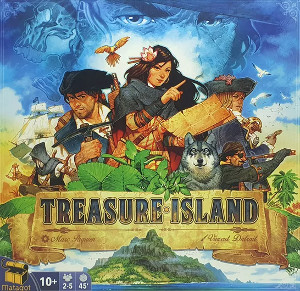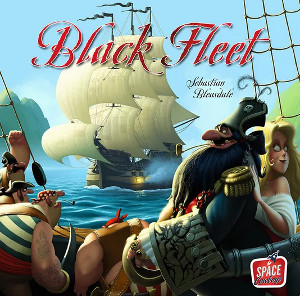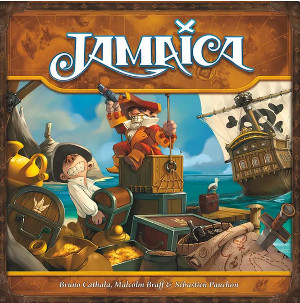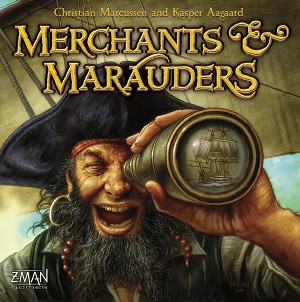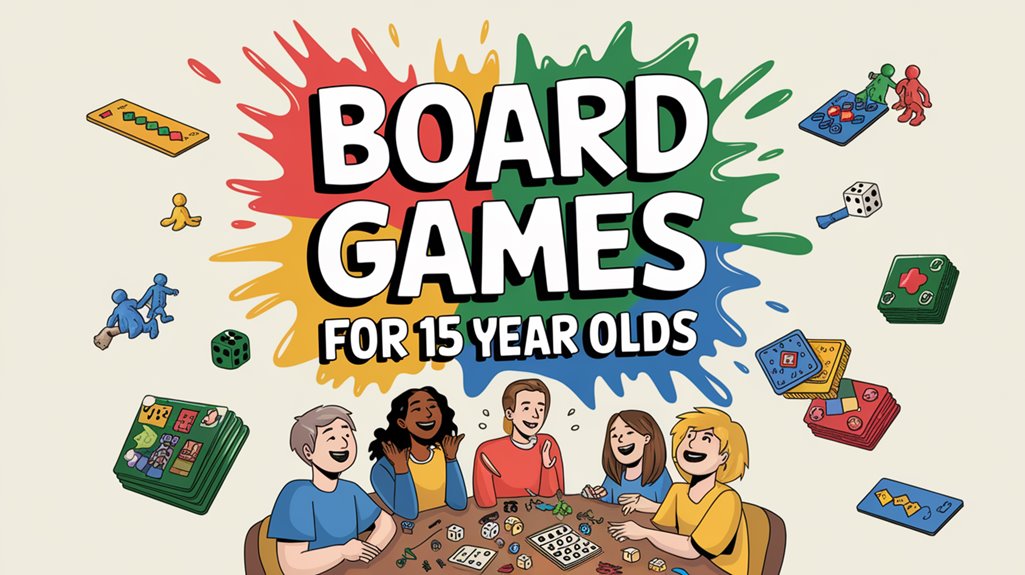Pirate-themed board games form a notable tabletop strategy subgenre featuring nautical mechanics, resource management, and variable player powers. Games like Treasure Island use hidden information while Merchants & Marauders combines action selection with risk management. These games balance aggressive scoring with defensive tactics through hand management, area control, and raiding mechanics, with optimal system navigation determining the ultimate victor.
Key Takeaways
- Popular pirate board games include Treasure Island, Black Fleet, Jamaica, and Merchants & Marauders, each offering unique gameplay experiences.
- Pirate-themed games range from simple roll-and-move mechanics to complex resource optimization and area control strategies.
- Many pirate board games are family-friendly, designed for ages 8+ with accessible rules while maintaining strategic depth.
- Gameplay styles vary widely from semi-cooperative treasure hunts to competitive naval battles lasting between 30-180 minutes.
- Visual design in pirate games typically features vibrant iconography and thematic illustrations enhancing the immersive seafaring experience.
Top Pirate Games Today
The contemporary pirate-themed tabletop genre encompasses diverse mechanical frameworks catering to various strategic preferences and player counts. Modern designs have evolved beyond simple roll-and-move mechanics to incorporate resource optimization, area control, and asymmetric player powers within nautical settings. Players seeking maritime tactical experiences can select titles based on preferred interaction levels, from semi-cooperative treasure hunts to competitive naval engagements.
- Treasure Island – Semi-cooperative deduction game with one player as Long John Silver providing clues while others search for buried treasure across a paintable map
- Strategic Heist: Black Fleet – Pick-up-and-deliver mechanics with ship movement optimization and player-controlled pirates intercepting merchant vessels
- Competitive Crew: Jamaica – Racing game featuring simultaneous action selection where players load cargo, fire cannons, and navigate treacherous waters
- Merchants & Marauders – Sandbox-style gameplay allowing players to choose between legitimate trading or piracy with extensive ship customization options
- Dice-Driven: Dead Men Tell – Press-your-luck mechanics combined with set collection where each die face represents different pirate actions and opportunities
Swashbuckling Adventure: Treasure Island (2018)
Designed by Marc Paquin and masterfully illustrated by Vincent Dutrait, Treasure Island delivers asymmetrical gameplay mechanics that position one player as the cunning Long John Silver against a crew of treasure-hunting pirates. This board game effectively implements semi-cooperative dynamics through deception and strategic exploration, garnering a solid 7.2/10 on BoardGameGeek.
Players navigate the tactical terrain in 45-60 minute sessions, employing misdirection and deductive reasoning while avoiding traditional combat systems. The $59.99 MSRP reflects its specialized components and replayability quotient. Though strategies become familiar across multiple sessions, the social interaction variables maintain engagement integrity.
The design framework, based on Stevenson’s classic novel, accommodates 2-5 participants and prioritizes exploration over confrontation, making it accessible for family play while offering sufficient strategic depth for experienced gamers.
Strategic Heist: Black Fleet
Where Treasure Island emphasizes deduction and misdirection, Black Fleet shifts the tactical framework toward multi-vessel management and optimization-based gameplay loops. Within its 60-90 minute timeframe, participants execute complex pirate tactics while steering through a dynamic economic ecosystem.
The game’s core mechanics revolve around resource management as players commandeer ships to intercept merchant vessels, plunder commodities, and transport cargo to hideouts for victory point accumulation. Naval strategy becomes paramount when evading the royal navy’s pursuit while simultaneously planning offensive maneuvers against opponents.
Black Fleet’s vibrant aesthetic reinforces its thematic elements without compromising strategic depth. The scaling difficulty based on participant count (2-4 players) creates variable competitive dynamics, ensuring tactical diversity across multiple sessions. Players must continuously recalibrate their approaches, balancing risk-reward calculations against the ever-shifting maritime scenery.
Competitive Crew: Jamaica
Among the upper echelon of pirate-themed tabletop entertainment stands Jamaica, a resource-driven racing game that counterbalances strategic depth with accessibility for players ages 8 and up. Accommodating 2-8 competitive buccaneers, this tactical voyage circumnavigating the titular island demands ideal pirate strategy through dice-action pairings.
The game’s mechanical framework revolves around resource management—food fuels forward movement, gold promotes terrestrial advancement, and powder allows aggressive crew interaction through combat engagements. Each decision presents tactical dilemmas: conserve provisions or accelerate? Attack opponents or fortify holds?
With its 30-60 minute gameplay duration and 7.5/10 BGG rating, Jamaica delivers a mathematically balanced experience where probability management intersects with tactical planning. The striking visual design amplifies immersion while maintaining mechanical transparency—hallmarks of a system where randomness and calculation coexist in harmonious tension.
Classic Merchant Trading: Merchants & Marauders
For maritime strategists seeking ultimate tactical depth, Merchants & Marauders stands as the definitive pirate economy simulation within the contemporary tabletop canon. Published by Z-Man Games, this 2-4 player masterpiece offers dual-path victory through merchant strategies or pirate conflicts across a meticulously rendered Caribbean theater.
Players navigate a 90-180 minute session balancing resource management imperatives while adapting to unpredictable environmental factors. The dice-based combat and sailing mechanics introduce calculated risk elements that prevent dominant strategies from emerging. Emmanuel Aquin’s design brilliantly integrates cooperative opportunities within a chiefly competitive framework.
The game’s high BoardGameGeek rating validates its mechanical sophistication. Whether establishing trade networks between ports or engaging enemy vessels in tactical encounters, participants must continuously assess their position within the dynamic Caribbean ecosystem, adjusting strategies as fortune’s winds shift across the tabletop seascape.
Dice-Driven: Dead Men Tell No Tales
Dead Men Tell No Tales (3rd Edition)
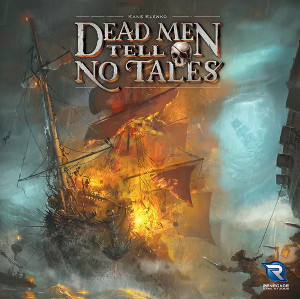
Randomness mechanics define the tactical terrain of “Dead Men Tell No Tales,” a dice-driven pirate simulation that utilizes probability management as its core engagement mechanism. The game’s unpredictable gameplay creates tension between strategic planning and adaptation to fortune’s whims, accommodating 2-6 players within its approximately 60-minute duration.
| Component | Function | Strategic Value |
|---|---|---|
| Dice Mechanics | Determines success/failure | Risk assessment |
| Resource Pool | Fuels player actions | Economic advantage |
| Combat System | Resolves conflicts | Territorial control |
Veterans recognize that steering through the probability spaces requires balancing opportunistic raids with resource conservation. The pirate lore infuses thematic weight to otherwise abstract mechanics, while vibrant visuals amplify immersion. Success hinges on understanding statistical likelihoods while maintaining flexibility – a paradoxical freedom within the confines of dice-determined outcomes.
Storytelling: Libertalia
Narratively sophisticated among modern pirate-themed tabletop experiences, Libertalia improves strategic card play through its robust storytelling framework. Paolo Mori’s design, complemented by Miguel Coimbra’s evocative artwork, implements narrative mechanics that transcend mere aesthetic value, transforming 60-90 minute sessions into immersive maritime conquests.
The game’s character development system assigns unique abilities to competing captains, facilitating asymmetrical gameplay while maintaining balanced competition. Player engagement thrives through simultaneous action selection—a mechanism demanding tactical foresight and psychological warfare. This decision matrix creates emergent narratives as pirates vie for ideal loot acquisition.
What distinguishes Libertalia is its fusion of bluffing elements with strategic depth, allowing 2-6 participants to experience freedom of choice while maneuvering through consequences of their maritime machinations. The unpredictable interaction between player decisions creates memorable, self-generating storylines that change dramatically with each session.
Family-Friendly: Cartagena (2000)
Accessibility defines Cartagena, a prime gateway title in the family-friendly segment of pirate-themed tabletop entertainment. This 2-5 player escape scenario implements a card-driven movement mechanism that balances luck mitigation with tactical decision-making. The 30-45 minute playtime promotes multiple sessions within standard family timeframes.
The game’s pirate strategies revolve around efficient hand management while traversing the modular path to freedom. Players must analyze opportunity costs when deploying cards, creating tension between immediate advancement and long-term positional advantage. The age recommendation of 8+ acknowledges the game’s strategic depth while remaining accessible to younger demographics.
Cartagena’s game aesthetics employ vibrant iconography and thematic illustrations that improve table presence while maintaining functional clarity. These visual elements, combined with intuitive mechanics, create family dynamics that encourage meaningful interaction without excessive rules overhead.
